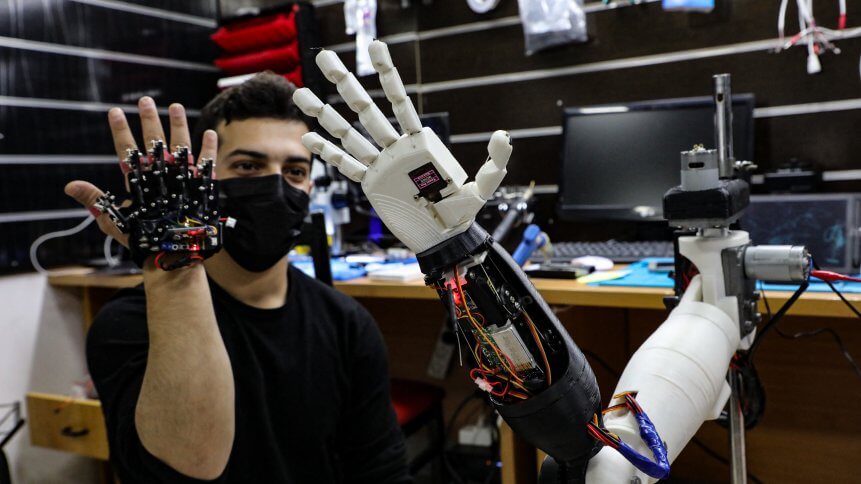
Behind the many weapons – missiles, lasers, and other firepower – within the Iron Man suit, what has been paramount in helping Tony Stark defeat his adversaries time and time again is the artificial intelligence (AI) system that was integrated into his armor.
Dubbed J.A.R.V.I.S. (Just A Rather Very Intelligent System), the AI system provides Stark with valuable intel during combat and analyzes the moves of his enemies in real-time to provide him with optimal recommendations and strategies to come out on top. Outside combat, the system oversees the entire business for Stark Industries, along with managing the security protocols for his mansion and Stark Tower.
Now imagine if your organization has its hands on a system like J.A.R.V.I.S. – how would the future of the business look like?
Today, AI and machine learning (ML) solutions are very much capable of performing similar tasks to what J.A.R.V.I.S. can do, albeit on a smaller scale. Organizations are increasingly harnessing the power of AI/ML to enhance their current capabilities, enable operational efficiency, solve novel problems, digitalize and automate traditional processes, and unlock new business models and revenue streams.
The superpowers of artificial intelligence
As the adage goes, data is the new oil for the digital economy. Organizations collect vast amounts of data from multiple touchpoints across their customers’ journey each day to better provide personalized and improved customer experiences.
However, not all organizations are making the best use of their data. In fact, Forrester found that between 60-73% of all data within an enterprise were not utilized for analytics. Data is invaluable to organizations only when it is being analyzed to derive value, but worth nothing if it is stored in vaults, locked down, and forgotten.
The problem stems from not knowing how to manage the data and turning them into actionable insights.
Here’s where AI/ML can come in to save the day. With superpower-like abilities, AI/ML solutions can help organizations manage and analyze their troves of data in a more effective and secure manner:
- Extrasensory: Converging AI/ML technologies with IoT sensors, organizations can collect and filter data, and conduct predictive maintenance based on what was gathered.
- Telepathy and precognition: Helps organizations analyze data in real-time, provide actionable insights, recommend the next best approach, and predict potential scenarios.
- Supersonic speed: Automates tasks and performs processes and operations much faster than any human.
- X-Ray vision: Enables organizations to have a 24/7 assessment and view into the network infrastructure, continuously detecting and identifying any problems and threats.
AI and ML to the rescue across industries
One key advantage of AI and ML is that it is industry-agnostic – whether insurance and banking, logistics and transportation, or healthcare and the public sector, organizations are investing in AI and ML solutions to achieve their competitive advantage.
In the financial services sector, AI/ML solutions can be used to detect fraud cases and assist financial audits. Stockbrokers can use these solutions to automate the analysis of stock market data and analysts’ forecasts, helping them deliver profitable trading strategies and better predict stock prices. Banks can also look at customer data and past transactions to recommend products with high likelihood to be purchased, creating new revenue streams for the business.
At a time when the supply chain is undergoing severe disruption, organizations in the logistics industry can use AI to optimize shipping routes, reduce delivery time, and increase profitability. Manufacturers can also use these technologies to predict upcoming failures of components in the manufacturing process to proactively schedule maintenance, preventing any downtime that can be caused by damages.
AI/ML is also able to process and extract key information from unstructured data – a game-changer for industries that rely heavily on images and physical documents. Doctors may catch plenty of flak for their undecipherable handwriting, but AI/ML can make sense of it. Public sector agencies can also use the technology to analyze the huge volumes of data gathered and help predict trends, automate analysis and insights based on the data, and implement data-driven decisions to deliver better experiences for citizens.
YOU MIGHT LIKE

How AI, ML will further advance the Ed-tech system
The Kryptonite of data-powered solutions
For the uninitiated, AI/ML may be seen as a panacea that can address any and all the challenges that the organization is facing.
However, the efficacy of an AI/ML solution lies in the quality of the data it taps on. The mismatch of expectations and overreliance on the technology may also result in the failure of the solution, thus failing to meet the organization’s KPIs. This could lead to the technology being shoved under the rug and left forgotten, with the organization reverting back to manual processes.
Instead, organizations need to focus on a single, or handful of challenges, and design a purpose-built solution based on AI/ML to solve those problems. Business leaders need to be able to identify and prioritize the few specific challenges the organization is facing, have a good understanding of the limitations of the technology and where AI/ML can address those problems, then fleshing out a fully qualified use case.
Integrating AI/ML into the organization is not a one-time process. To reap the full benefits of AI/ML, organizations need to continuously measure and improve on the technology and ensure that it is meeting goals and expectations.
To quote Jeff Bezos, founder and executive chairman of Amazon, “We’re at the beginning of a golden age of AI. Recent advances have already led to inventions that previously lived in the realm of science fiction – and we’ve only scratched the surface of what’s possible.”
Indeed, the superpower-like abilities of AI/ML solutions are no longer science fiction. AI/ML solutions will be quintessential in helping organizations master their digital potential, and bridge gaps that traditional software aren’t able to cover. By designing and implementing purpose-built AI/ML solutions, organizations will be able to easily achieve the competitive difference they strived so hard for in the digital era.
Article contributed by David Chan, the Managing Director of Adnovum Singapore









